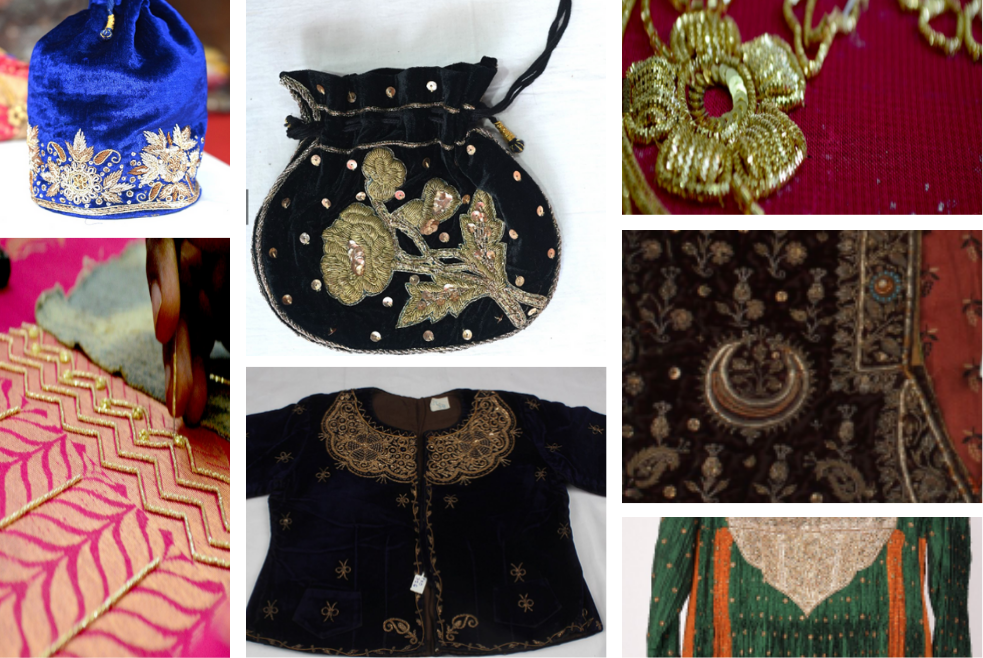Bhopal Zardozi
Other Embroideries

History
Zardozi embroidery in Madhya Pradesh, derived from the Persian words “zar” (gold) and “dozi” (embroidery), flourished with gold and silver threads. Over time, rising costs led to substitutes like copper, lurex, and polyester wires. Despite these changes, the craft continues to evolve, blending tradition with innovation, ensuring its enduring appeal in both traditional and contemporary markets.
Raw Materials and Tools
Silver, gold-coated, copper, lurex, and polyester wires; silk or cotton threads; fabric (velvet, silk, satin); glass beads; sequins. Tools include jantri (steel plate), pliers, embroidery frames, fine needles, and wooden blocks for design transfer.
Process
Madhya Pradesh zardozi embroidery starts with artisans drawing silver wires through a steel plate (jantri) with pliers to refine them. These wires are then gold-coated and flattened into badla. The zari wire is wrapped around a silk or cotton core (kalabattu) for flexibility. Using fine needles, artisans embroider intricate motifs like paan, patti, and pachni onto fabric, creating rich, textured designs.
Design and Color
Madhya Pradesh zardozi embroidery features intricate floral, geometric, and nature-inspired motifs. Wires like gijai for outlines, khichcha for a polychrome effect, and salma for zigzag textures add depth. Gold and silver dominate, with colored threads enhancing vibrancy. Sitara and chakri embellishments add sparkle, making each piece rich and ornate.
Product Range
Zardozi embroidery adorns saris, lehengas, suits, and dupattas. Accessories include purses, belts, badges, and jewelry. The craft extends to decorative items, showcasing exquisite handwork and traditional elegance.
Additional Information
